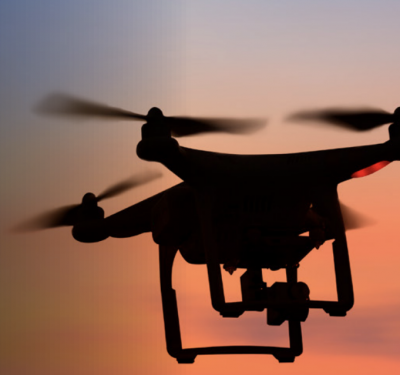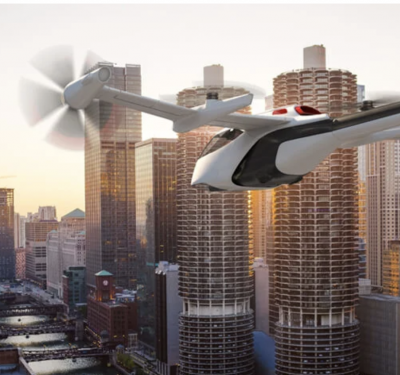
Fully self-driving cars on U.S. highways may be just around the corner. Unsplash photo by Jake Givens.
The U.S. Department of Transportation (USDOT) recently released new Federal guidance for automated vehicles, advancing its commitment to supporting the safe integration of automation into the broad multimodal surface transportation system. “Preparing for the Future of Transportation: Automated Vehicles 3.0” (AV 3.0) builds upon — but does not replace — voluntary guidance provided in “Automated Driving Systems 2.0: A Vision for Safety.”
“The safe integration of automated vehicle technology into our transportation system will increase productivity, facilitate freight movement and create new types of jobs,” said Secretary Elaine L. Chao in a press release.
AV 3.0 incorporates the results of extensive stakeholder engagement to provide updated voluntary guidance and policy considerations for a range of industry sectors, including: manufacturers and technology developers, infrastructure owners and operators, commercial motor carriers, bus transit, and state and local governments.
AV 3.0 supports the safe development of automated vehicle technologies by:
- Providing new multi-modal safety guidance
- Reducing policy uncertainty and clarifying roles
- Outlining a process for working with USDOT as technology evolves
Specifically, the new AV 3.0 guidance provides several updates to the Department’s initiatives relating to automated vehicles, by:
- Stating that the Department will interpret and, consistent with all applicable notice and comment requirements, adapt the definitions of “driver” or “operator” as appropriate to recognize that such terms do not refer exclusively to a human, but may include an automated system.
- Identifying and supporting the development of automation-related voluntary standards developed through organizations and associations, which can be an effective non-regulatory means to advance the integration of automation technologies.
- Affirming that the Department is continuing its work to preserve the ability for transportation safety applications to function in the 5.9 GHz spectrum.
AV 3.0 also announces and discusses several upcoming rulemakings and other actions being taken in the near future by the Department’s operating administrations, including:
- The National Highway Traffic Safety Administration (NHTSA) will request public comment on a proposal to streamline and modernize the procedures it will follow when processing and deciding exemption petitions.
- The Federal Motor Carrier Safety Administration (FMCSA) will initiate an Advance Notice of Proposed Rulemaking to address automated vehicles, particularly to identify regulatory gaps, including in the areas of inspection, repair, and maintenance for ADS.
- The Federal Highway Administration (FHWA) announces plans to update the 2009 Manual on Uniform Traffic Control Devices (MUTCD), taking into consideration new connected and automated vehicle technologies.
- The Federal Railroad Administration (FRA) is initiating research to develop and demonstrate a concept of operations, including system requirements, for the use of automated and connected vehicles to improve safety of highway-rail crossings.
- The Maritime Administration (MARAD) and FMCSA are evaluating the regulatory and economic feasibility of using automated truck queueing as a technology solution to truck staging, access, and parking issues at ports.
- The Pipelines and Hazardous Materials Administration (PHMSA) is researching the ability to enable the digital transmission of information to first responders before they arrive at an incident that involves hazardous materials.
- The Federal Transit Administration (FTA) has published a five-year research plan on automating bus transit.
The draft Guidance will be published in the Federal Register for public review and comment. More information on the Department’s work on automated vehicle systems can be found at www.transportation.gov/av.
NHTSA Document
Fully self-driving cars may be just around the corner on U.S. roads under a pilot program the Trump administration said last week it was considering, which would allow real-world road testing for a limited number of the vehicles, according to Reuters.
Self-driving cars used in the program would potentially need to have technology disabling the vehicle if a sensor fails or barring vehicles from traveling above safe speeds, the National Highway Traffic Safety Administration (NHTSA) said in a document made public last week.
NHTSA said it was considering whether it would have to be notified of any accident within 24 hours and was seeking public input on what other data should be disclosed including near misses.
The U.S. House of Representatives passed legislation in 2017 to speed the adoption of self-driving cars, but the Senate has not approved it. Many safety groups oppose the bill, which is backed by carmakers, according to a report from Reuters. (bit.ly/2zrN92C) It has a small chance of being approved in 2018, congressional aides said.
NHTSA said the pilot project would attempt to find “how best to foster the safe introduction of vehicles with high and full driving automation onto our nation’s roadways.” Real world data would help create methods “of validating the safety performance” of self-driving vehicles and writing safety rules, it added.
Last week, the Trump administration said it was working to revise safety rules that bar fully self-driving cars from the roads without equipment such as steering wheels, pedals and mirrors.
Automakers must currently meet nearly 75 auto safety standards, many of them written with the assumption that a licensed driver would be able to control the vehicle using traditional human controls.
Under the law, automakers can petition for an exemption for up to 2,500 vehicles for vehicle safety standards as long as they are at least as safe as existing vehicles.
NHTSA said it would partner with state and local governments in developing a pilot program. It could require companies to design vehicles so they know their location and the local rules of the road, while states and cities would enforce the rules, according to published reports.






